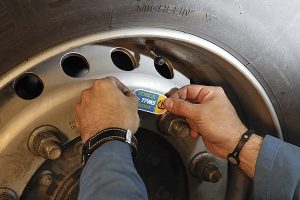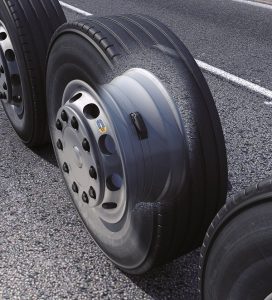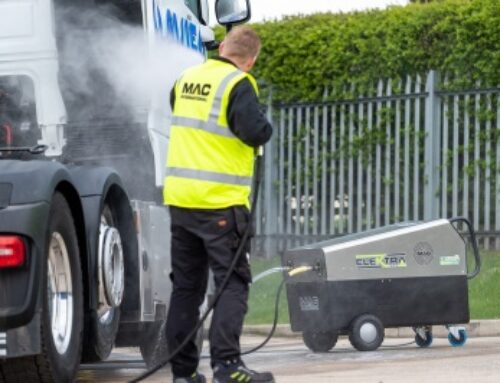Haldex puts tyre pressure monitoring in the spotlight
 Trailer technology specialist Haldex has outlined some of the issues that can be caused by insufficient tyre pressure, and the benefits of its tyre pressure monitoring system (TPMS).
Trailer technology specialist Haldex has outlined some of the issues that can be caused by insufficient tyre pressure, and the benefits of its tyre pressure monitoring system (TPMS).
The company warns of considerable costs fleets can face, both direct and indirect, associated with low tyre pressure.
“The numbers speak for themselves: in tractor units alone, more than 60 percent of all trucks drive on tyres with insufficient pressure,” said Haldex.
“This was the result of a survey carried out in Germany by Continental. It is therefore safe to assume that the situation in terms of towed units is even more dramatic.
“The intention to maintain correct tyre pressure is not always enough: most air pumps available at petrol stations are faulty. The results are costly from two perspectives. First, insufficient tyre pressure reduces the service life of the tyre. Driving on tyres with only 80 percent of prescribed pressure shortens a tyre’s life by 20 percent.
“Second, insufficient tyre pressure increases rolling resistance, which drives up fuel consumption. A pressure shortfall of 20 percent can add a good two percent to consumption. Roughly estimated, this can very quickly add 2000 to the annual operating costs of an articulated truck – simply because of inadequate tyre pressure.”
The company continued: “Additional costs occur if a load train is off the road because of a flat tyre: a closer look at the reason for most tyre-related defects shows that low pressure is usually the culprit, which can also be due to ‘natural causes’: a tyre loses about 0.5 bars every three months because air diffuses through the rubber and valves do not provide an absolute seal.”
 The Haldex Tyre Pressure Monitoring System (TPMS) is fully integrated in the Haldex EBS for semi-trailers, and provides automatic direct pressure and temperature control for each individual tyre, and also identifies gradual, creeping pressure loss and issues a warning based on individually programmable thresholds.
The Haldex Tyre Pressure Monitoring System (TPMS) is fully integrated in the Haldex EBS for semi-trailers, and provides automatic direct pressure and temperature control for each individual tyre, and also identifies gradual, creeping pressure loss and issues a warning based on individually programmable thresholds.
“The wheel sensor, which has a particularly long service life (eight years), has been robustly built for the long run and still manages to weigh in at less than 50 grams, which means no imbalance issues,” said the company.
In comparison with a traditionally rigid connection, the risk of damage to a flexible connection, when, for example, fitting a tyre, is significantly less, the company says. If a wheel is replaced, the Haldex TPMS recognises the changed circumstances and reconfigures the system accordingly.
“The sensor is also easy to mount on the wheel rim and sends its data directly, without an external antenna, to the CAN-compatible Remote Communication Unit (RCU),” the firm continued.
“From there, the measured data (with a range of zero to 14 bars) is transmitted by the Haldex EB+ to the Info Centre screen located on the trailer or to the driver’s cab. Haldex TPMS is well-suited for both factory installation and retrofitting.”
The speed and ease of retrofitting is cited as one of the key advantages of the system. The procedure takes about an hour and a half. Installation and programming of the system should only be completed by trained workshops, says Haldex.
First, the sensor is fastened to the rim of the wheel. The tyre is then placed directly over the sensor, and filled with compressed air. The Haldex Info Centre 2 display is affixed to the trailer. A receiver unit is mounted underneath, then connected to the display and the EB+ unit. The system can then be configured.
If desired, the Info Centre can show the pressure and the temperature of each individual tyre. The Haldex TPMS also transmits tyre status information over the CAN Bus to the display in the truck.











